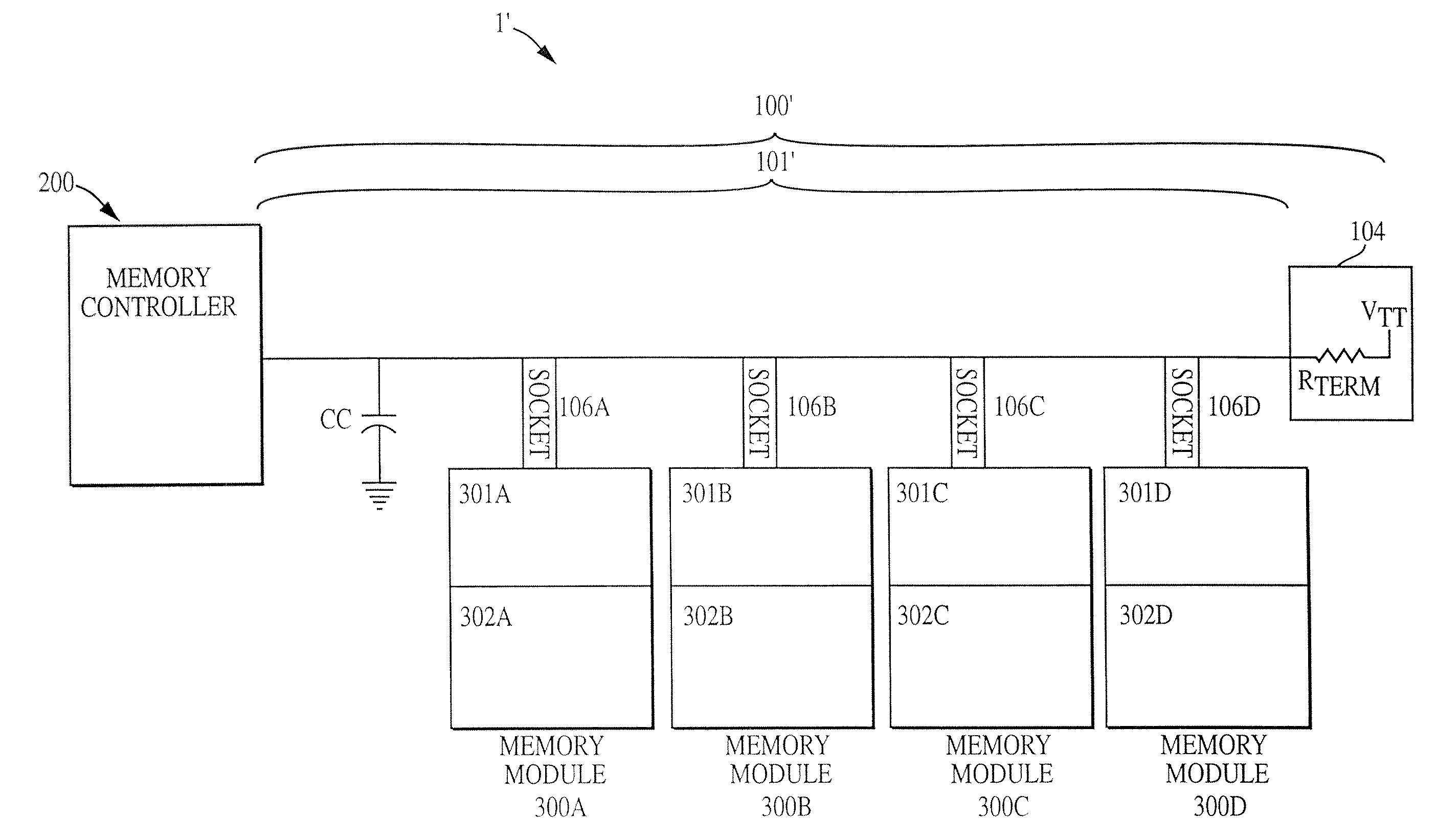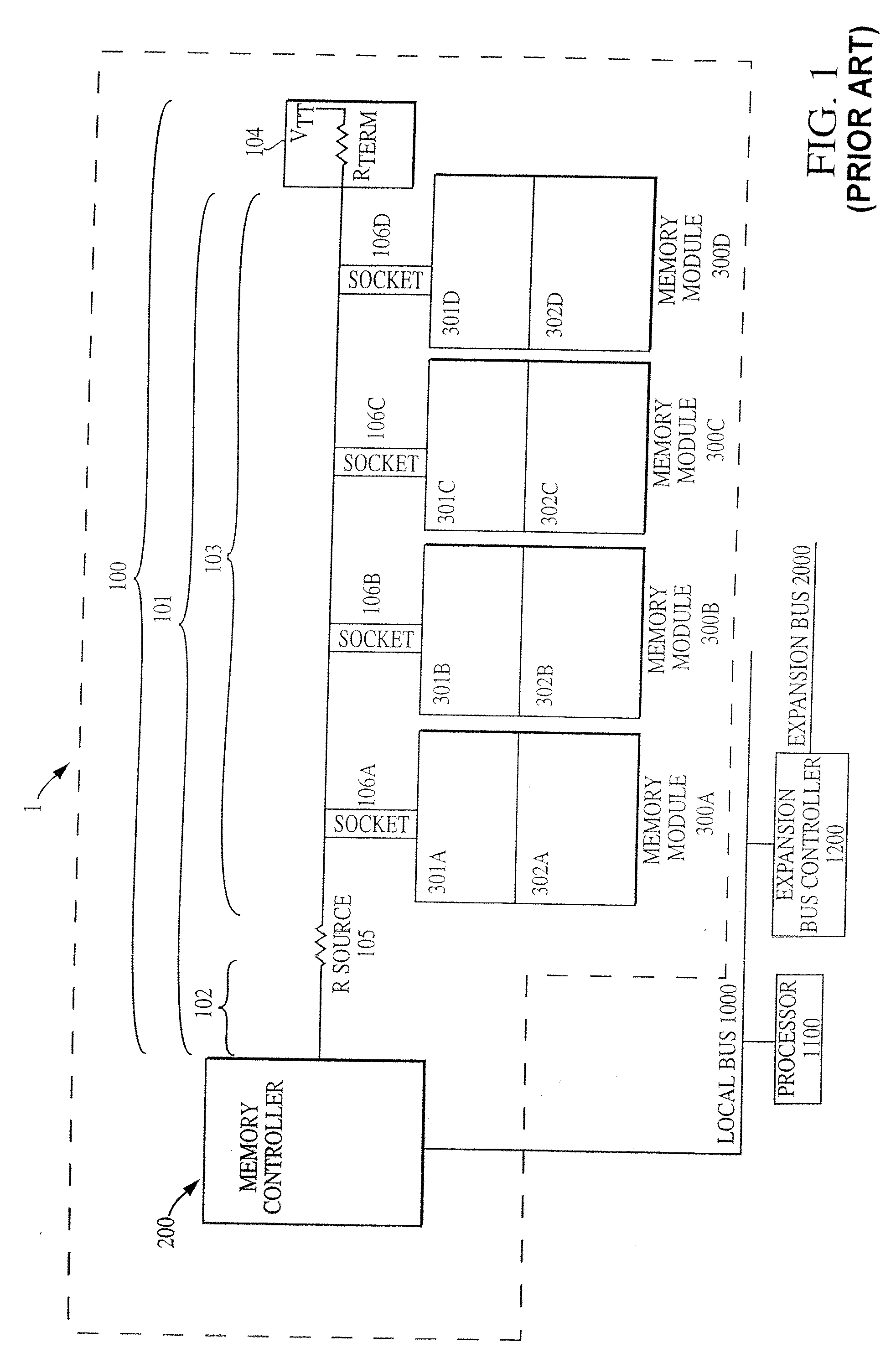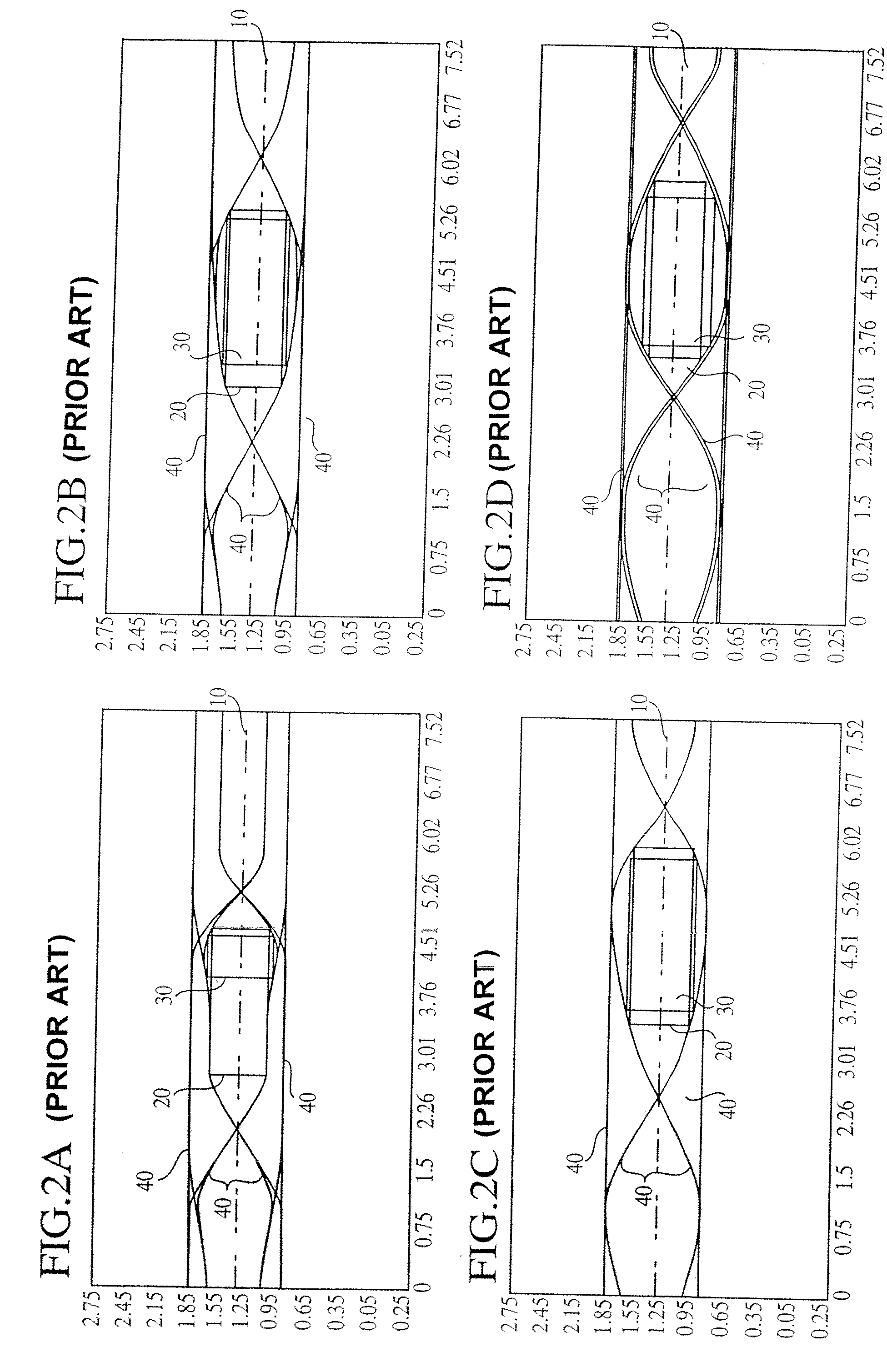Capacitive multidrop bus compensation
a multi-drop bus and compensation technology, applied in the field of improving signal integrity, can solve the problems of phase and amplitude aberration in unwanted signal reflection into the bus, and attenuation of amplitudes at frequencies where the phase error is significant, so as to improve signal integrity, increase the amount of desirable harmonic content, and alter the frequency response of the bus
- Summary
- Abstract
- Description
- Claims
- Application Information
AI Technical Summary
Benefits of technology
Problems solved by technology
Method used
Image
Examples
Embodiment Construction
[0021] Now referring to FIG. 4, a first exemplary embodiment of the present invention is illustrated. FIG. 4 shows a memory system 1′ including a memory controller 200, a memory bus 100′ including a transmission line 101′ to which a plurality of sockets 106a-106d are attached. A plurality of memory modules 300a-300d may be inserted into the plurality of sockets 106a-106d. As in the conventional bus 100 (FIG. 1), the memory bus 100′ is terminated by a terminator 104, which includes a termination resistor Rterm and a termination voltage source VTT. In this exemplary embodiment, the termination resistor Rterm is a 27 ohm resistor, however, different resistances may be used. For example, a larger resistance, such as 37 ohms may also be used to reduce current requirements. Two significant differences between the exemplary bus 100′ and the prior art bus are the removal of the source resistor 105 of the prior art bus and the insertion of a compensating element, such as a compensating capac...
PUM
 Login to View More
Login to View More Abstract
Description
Claims
Application Information
 Login to View More
Login to View More - R&D
- Intellectual Property
- Life Sciences
- Materials
- Tech Scout
- Unparalleled Data Quality
- Higher Quality Content
- 60% Fewer Hallucinations
Browse by: Latest US Patents, China's latest patents, Technical Efficacy Thesaurus, Application Domain, Technology Topic, Popular Technical Reports.
© 2025 PatSnap. All rights reserved.Legal|Privacy policy|Modern Slavery Act Transparency Statement|Sitemap|About US| Contact US: help@patsnap.com



